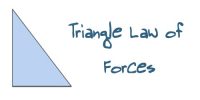We are familiar with friction in various ways in our daily lives. From Newton’s first law of motion we know that if no force acts on a body the body will continue in its state of rest or of uniform motion in a straight line. Does it actually happen in reality? Take a marble and roll it on the floor. When you roll the marble, you apply a force on it. As a result, the marble becomes mobile on the ground. According to Newton’s law the marble should remain in uniform velocity. In practice, it is seen that the marble comes to rest after traversing a small distance. This happens due to the friction of the floor. When the marble is in motion on the floor, a frictional force is developed due to the mutual friction between the marble and the floor. This force acts in the direction opposite to the motion and hinders the motion. If the friction of the floor was absent, then the marble would continue its perpetual motion with uniform velocity.
When a body moves or tends to move over another body, then a resistance is developed between the two surfaces in contact, which is known as friction. This resistive force is called frictional force.
The frictional force always acts opposite to the motion and obstructs the motion.
Origin of friction
Whenever the surface of an object slides over the surface of another object, each object exerts a frictional force on the other. The question arises- why friction occur? Friction is the result of the surface irregularities of any two surfaces. Each object has a surface. Again, the surface may be smooth or rough. Apparently, the surface of an object seems to be smooth, but it is observed that there are high and low grooves on it when viewed by a microscope. When an object moves on another object, then the grooves of the two surfaces in contact catch onto one another.
As a result of which the motion of one surface over another surface gets obstacled. As the grooves of a surface deepend and their number increases i.e. as the surface become rougher, the motion of one surface over another becomes more obstructed. Then the magnitude of frictional force also increases. The body becomes mobile if it can overcome the resistance of the surface in contact. The frictional force causes the object to slow down and stop thereby.













